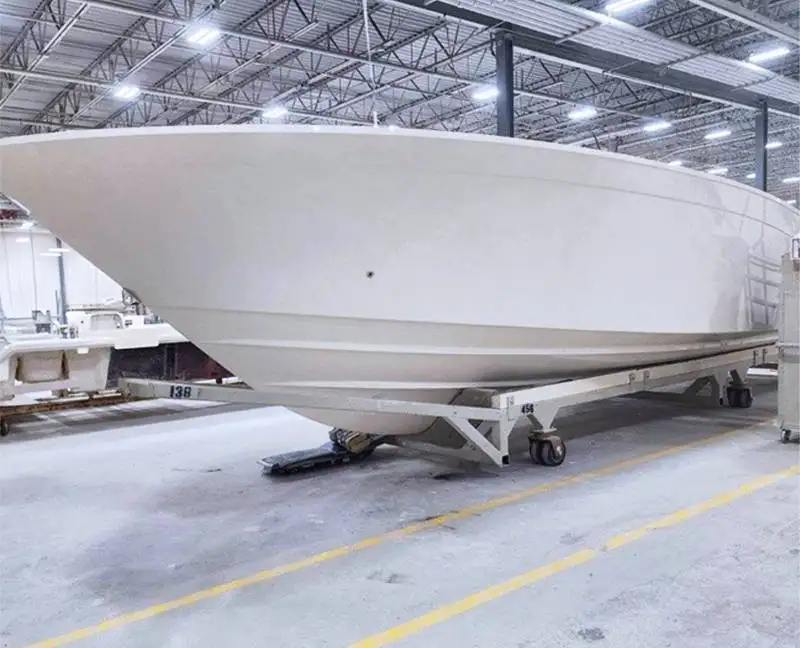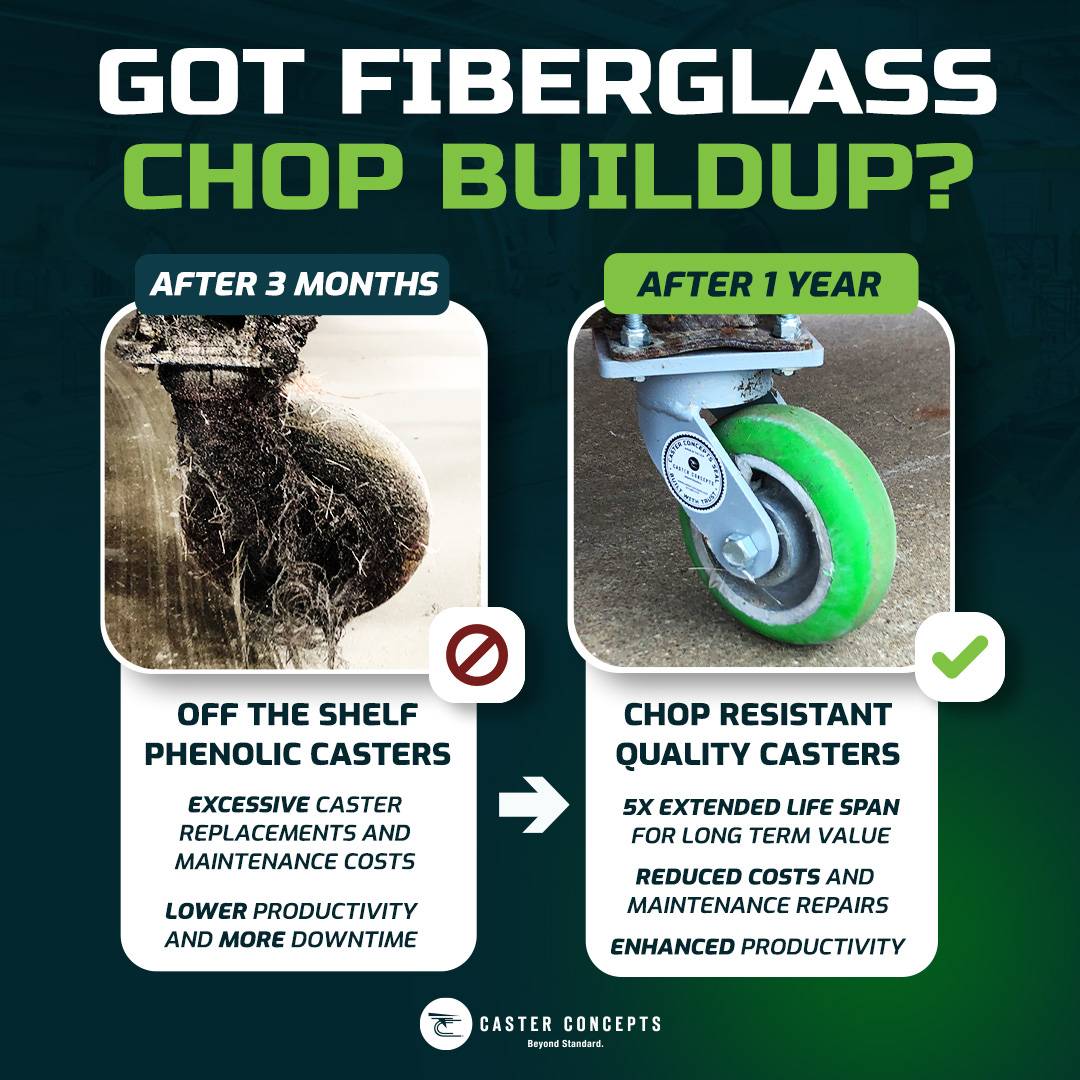

Let’s discuss some of the most common mobility problems in the boating industry. From moving heavy loads to chop buildup, many factors go into choosing the right caster for the boating Industry.
In this industry, heavy loads can sometimes be an understatement. Depending on the size of the boat, the weight you are moving can vary from 2,000 pounds to 500,000 pounds. Yet, no matter the load, choosing the right caster can make a huge difference in your production capabilities. The idea is to move more with less effort. And the right caster can hugely improve productivity and safety.
With this in mind, determining the right caster for your application should include several steps:

Chop/fiberglass buildup is another problem that boat manufacturers face when using carts. Many boating companies commonly use inexpensive, nearly disposable casters in areas with a heavy chop. A more practical solution is a 57 Series Modified Rig, which features a larger opening between the rig and wheel and a balloon tread to disperse debris efficiently. The graphic to the left shows our product, which is still in use after one year of service in a boat manufacturing facility. This extended caster life results in a good return on your investment.
Twergo wheels are designed as two independently spinning wheels, so less surface area is touching the ground. They will not pick up chop like your standard phenolic or nylon wheel.
Most boating manufacturers have a nice smooth surface inside their facilities. But what happens when the boat moves outside and you run into problems with failing casters failing in parking lots and other areas?
The best solution for ensuring a long life in these areas is to engineer the right caster (and conditions) for the job. Make sure the surface is free of any form of debris. Wood, Screws, angle iron, etc. These will destroy a caster if you run into it at any speed.
In some instances, using a spring-loaded caster can increase the ability to run on rough ground. Consult your local professional to see if this is the case for your application.
This problem is common for boat manufacturers, and most are resigned to the belief that heavy boats cannot be easily moved.
While there are many different options for casters, choosing the exact caster to fit each application can be tricky. Below, I will outline the expectations for weight ranges and what is possible if the right caster is in place.
Please note that the weight and people ratio I included is based on testing we have done in a controlled environment. Results may vary by application.
Many boat manufacturers purchase inexpensive casters and accept that constantly replacing them is part of the process.
This doesn’t have to be the case. When choosing a caster for your specific application, you shouldn’t have to build in expenses for replacement casters every 2, 4, 6, or 12 months as needed.
I’ve seen the suitable casters used even in the most demanding environments in the last 5-10 years. Of course, this isn’t always the case, but if you take the time to engineer a caster specifically for your application, getting this type of life span out of your casters is not uncommon.
This blog aims to educate the end user and help you understand what to expect and what can be accomplished when designing the suitable casters for your application.
If I did not cover your specific issues, please email me at pvandellen@casterconcepts.com, and I will be glad to help with your problems or concerns.
Here is part 1 (Selecting the correct Heavy Duty caster for the Boating Industry):